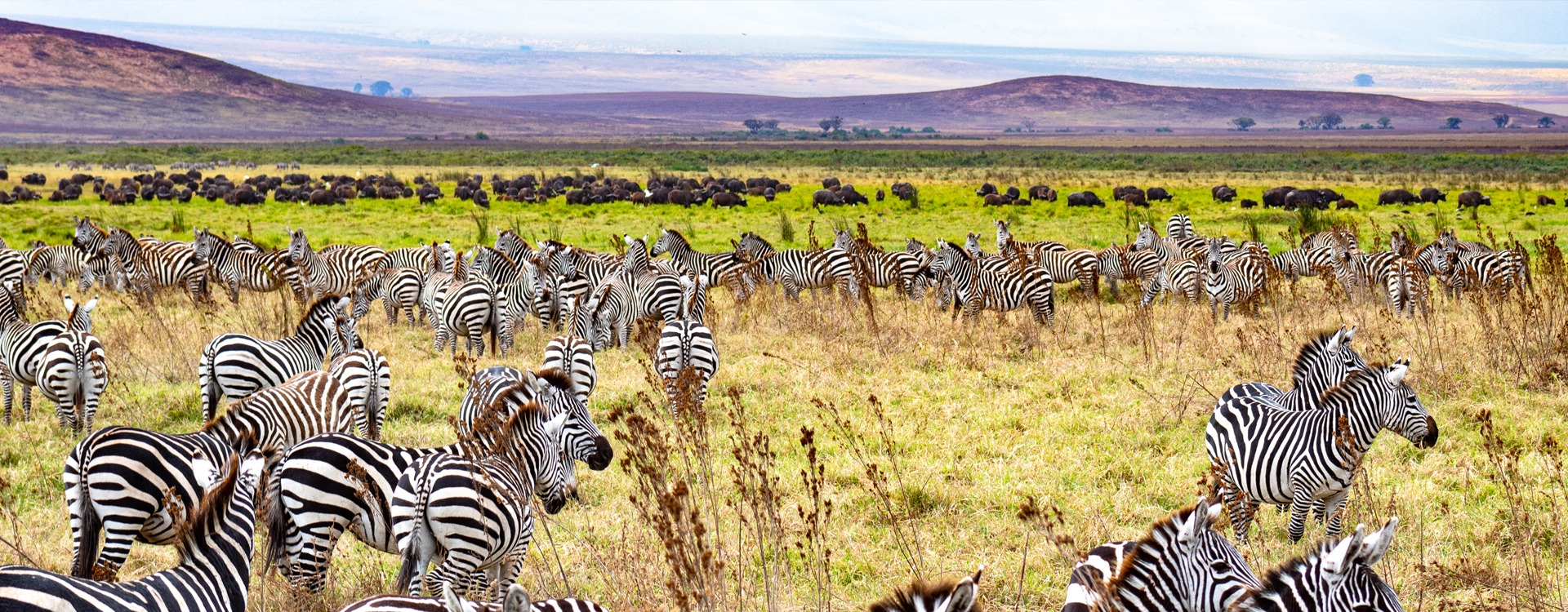NGORONGORO CONSERVATION AREA
In 1951, the Serengeti National Park and the surrounding Ngorongoro Area were split into the current Serengeti National Park and the Ngorongoro Conservation Area. The Southern portion of the conservation area consists of large, short-grass plain and the Ngorongoro Highlands which contain extinct volcanoes and the Great Rift Valley.
Ngorongoro Crater Safari
The main attraction of the conservation is the famous Ngorongoro Crater that was formed after the explosion of a massive volcano located nearby. 1978, the crater was declared a UNESCO World Heritage Site and may soon be included in the list of the world’s natural wonders.
The crater is best known for its geological attractions and its outstanding wildlife.
Ngorongoro Wildlife Safari
Over the course of many years, the crater has formed a vibrant ecosystem. Aside from its wondrous landscape, the crater comprises of some of the best flora and fauna found on the continent.
The Lerai Forest resides in the South-Western corner of the crater and holds unique yellow fever trees. If you go toward the northern part of the forest, you’ll find the glistening Lake Magadi, Gorigor Swamp and the Ngoitokitok Springs on the Eastern side. You can’t go to the Ngoitokitok Springs without seeing the African hippos in their natural habitat—it’s a once in a lifetime experience!
Hippos aren’t the only mammals you see in the conservation; the area is packed with herds of elephants, buffalos, gazelles, bulls and many more animals you probably won’t find in other parts of the world.
Amongst all the animals present in the conversation, the big cats—the lions, leopards and cheetahs—are usually the most impressive for tourists.
Access to Ngorongoro Safari
Compared to some of the other game reserves and national parks in Tanzania, The Ngorongoro crater and conservation is easily accessible.
Tourists have the option of taking one of the daily light flights to Arusha from Dar where a registered tour guide and driver will transport them to the crater. The drive to the crater can take up 4 hours but once you make it there, the long trip is totally worth it!
Those that don’t want to stay in a 4×4 for long hours can take a plane to Manyara airstrip and then take an hour-long ride to crater.
Depending on your arrangements, you can make your way to a lodge that you have booked or hire a private driver to take you to the crater directly.
Where Do You Stay?
Bear in mind that there’s no place to stay within the Ngorongoro Crater itself. As a visiting tourist, you will have to find a book a room in the surrounding area of the Crater of the Rift Valley Escarpment.
Want to visit Ngorongoro Conservation Area and experience all that it has to offer? Get in touch with Nakuja Expeditions. We provide safaris and tours across Tanzania’s richest game reserves and national parks. Check out our itineraries online and feel free to contact us for more information!


